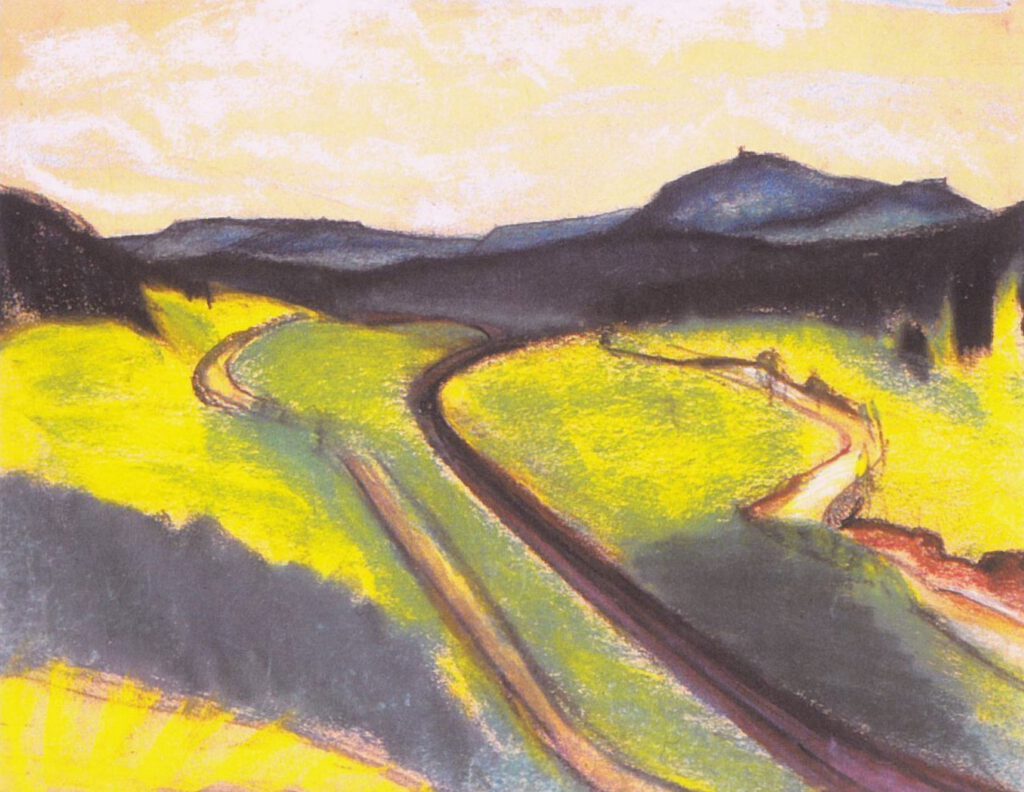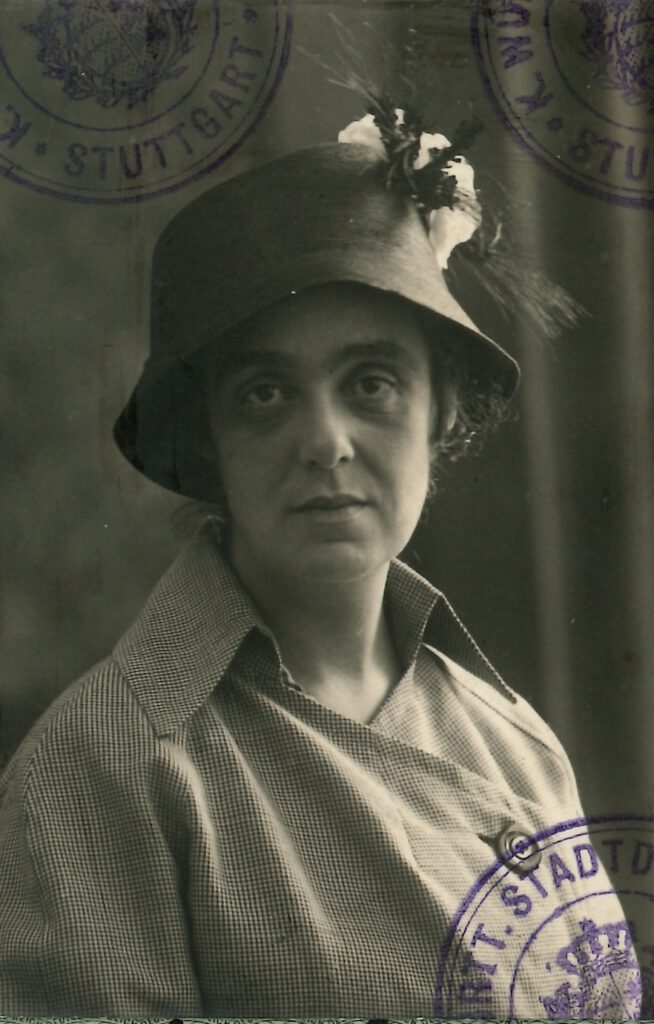Born on February 10, 1873 in Stuttgart
Murdered on September 4, 1942 in the Ghetto Theresienstadt concentration camp
Interned in Weißenstein in November 1941
She is certainly the most prominent among the internees of the Weißenstein forced residence. Her life story differs significantly from that of her fellow internees. Käthe’s father was a university professor and taught at various universities in Europe and overseas, so his first-born daughter got to know the wider world at an early age. At the age of 12, Käthe became a Protestant.
Her interest in art, especially painting, awoke early. From 1904 to 1909, she studied with various painters and worked as a freelance artist, first in Munich and then in Stuttgart. From there, she traveled to areas that inspired her as a landscape painter, including the Rems Valley, where she painted the picture below above Lorch Monastery.

Under Nazi rule, Käthe Löwenthal lost her earning potential: the Christian with Jewish roots was no longer allowed to exhibit and sell her paintings.

She returned to Nazi Germany from a trip to Switzerland to care for her sick friend Erna. Later, Käthe Löwenthal no longer had the opportunity to escape. At the beginning of February 1942, she had to move into the Schloss Weißenstein forced residence; a few weeks later, she was deported from Stuttgart to the Izbica ghetto and subsequently murdered.
See also the Stuttgart Stumbling Stone biography of Käthe Löwenthal.
(12.07.2023 kmr/ww)

